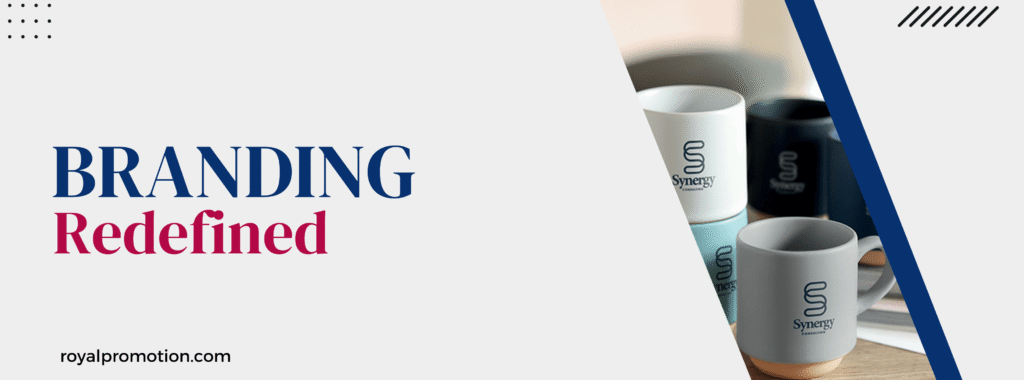
Our Branding
Branding/Customization of Promotional Gifts Almost every corporate gift and promotional merchandise can be branded using different methods. Various branding techniques are available and the choice depends on the following aspects of any promotional product:
Material
Material (Metal/ Plastic/ Textile/ Acrylic etc)
size
SHAPE
(Flat/Curved/Round etc)
Below is a brief description of common branding techniques:
Screen Printing:
Screen Printing is ideal for t-shirts or any flat surface and provides a clean and crisp image. The screen printing process works by using a screen frame that stores ink. A photochemical process lets the screen become non-permeable in certain areas to guarantee the desired effect. The ink is forced through the screen by a squeezer that presses the image onto the product. This allows for the thickest deposits of ink to be transposed upon the image. The result is a truly vivid finished product!
Heat Transfer:
Heat transfer is the process of applying a transfer (sticker) with one or more colours to an item. Transfers are often used on products that have a rough surface i.e. bags or hats where screen printing cannot give you the registration or fine lines that may be part of the image being reproduced.
Embroidery:
This is done on computerised embroidery machines which stitch the logo directly on any kind of textile e.g. shirts, towels, caps, bags, etc. It is a digitally controlled process in which a computer steers a needle and thread to embroider a surface. Depending on the machine size, 10-50 pcs of any item can be embroidered simultaneously on a single machine. As compared to screen print, embroidery looks classier and has a longer life. The cost of embroidery as branding is calculated on the number of stitches in the design and the number of items being embroidered.
Pad Printing:
This technique is used for products of odd shapes and sizes like pens, clocks, stress balls etc. The Pad printing process involves a printing plate with an image etched into the surface which is covered with ink, and then scraped clean leaving ink only in the etched area. A pliable silicone rubber pad is compressed onto the plate and lifted away. As the pad is lifted away, the ink sticks to the silicone pad. When the pad is compressed on the material to be printed, the ink is released.
Laser Engraving:
This is ideal for products of a metal, crystal and glass finish. Modern laser engraving uses a laser beam to engrave a logo into nearly every material. Its strength lies in its precision. Laser engraving offers pin-point accuracy that is much better when compared to prior methods of engraving. But coloured replica is not possible by this process.
Etching:
This is an electrolytic process where a piece of felt is soaked in corrosive liquid and is pressed through a stencil onto the product. Once the liquid comes into contact with the article, the desired imprint is etched into the surface. This imprint is very robust.
PVC/Metal Labels:
These labels are perfect for bags, lanyards and caps. It is a relatively new technology where a metal or PVC badge of your logo is created and attached to the product. Metal badges are riveted on or pasted while PVC label is sewn on. A fresh and innovative way to display your logo.
Epoxy Label/Dome:
The epoxy sticker is made of synthetic resin and a sticker with a logo. The clear resin is fitted precisely to the logo print. It protects the logo and also gives a 3D effect. This branding technique is perfect for rough or hard surfaces such as badge reels, umbrella knobs, name badges…
Embossing:
Embossing is ideal for leather products. Embossing creates a raised image of the product. Embossing simply means to press leather products into relief using heat and force. It requires an etched metal (female) die and a matching (male) counter die. When leather is pressed between the heated die and the counter die, the desired image is pressed into the stock.
Foiling:
Foiling is ideal for leather and flat products. Foiling is a simple concept. The process is achieved when a die is mounted on a plate and heated. Foil is placed between the die and the material to be imprinted. When the die presses against the foil, the heat releases the colouring layer from the foil roll and binds it to the end product. Foil stamping is the only printing process capable of applying bright, non-tarnishable metallic effects to paper, plastic, paper board and other surfaces.
Artwork:
For us to provide you with the best possible finished product, we require you to follow a few simple guidelines on how to supply artwork. Files need to be supplied in Adobe Illustrator and saved as .ai or .eps files. If you are unable to supply us with the required format, we can accept a business card, letterhead, or .jpeg, and at an additional charge, our in-house designers will re-draw your logo. If you have a specific PMS colour for your job, please specify the PMS number on your order.
